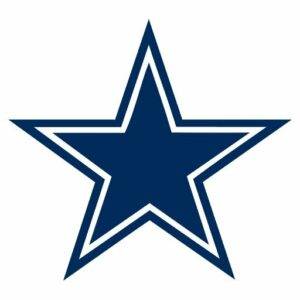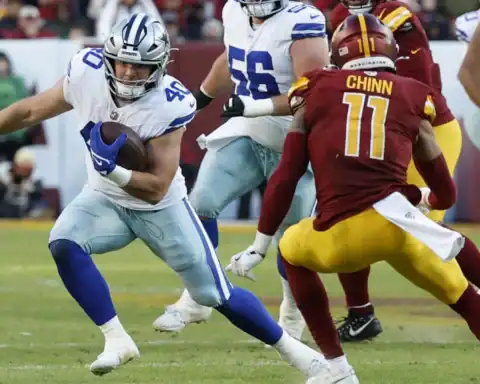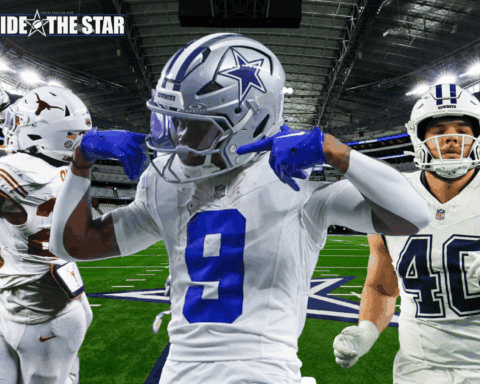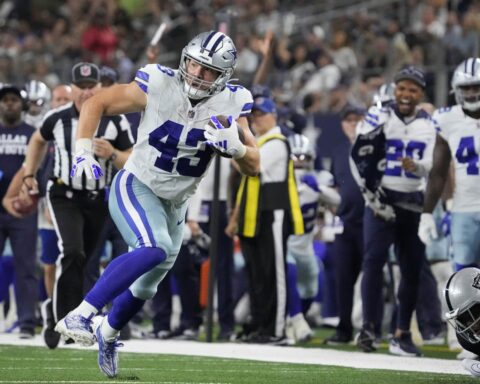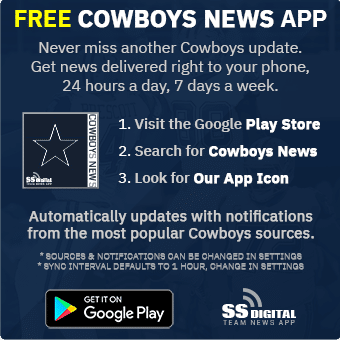During the 2019 offseason, Dallas surprised many by re-signing free agent fullback Jamize Olawale to a three-year contract. He was barely used in 2018, but the switch to Kellen Moore as offensive coordinator led to speculation that the fullback may be more utilized this year. That has not been the case; Olawale is still a non-factor and it makes you wonder why the Cowboys even bothered bringing him back.
Olawale’s contract has him as the fourth-highest paid fullback in the NFL currently. So far in 2019 he’s only appeared on 11% of Dallas’ offensive snaps, has no carries, and has only been targeted twice in the passing game with no receptions.
Granted, fullbacks aren’t a big part of any offense in modern football. Even Kyle Juszczyk, who is paid a little over $5 million per year by the 49ers, appears on just 34% of his team’s offensive plays.
But if all Dallas wanted was a rarely-used lead blocker and special teams player, why did they give Olawale $1.8 million per season? They could have found someone to fill those roles for a third of the price.
Jamize’s presence on the roster, which is often forgotten, came back into the spotlight last Thursday when he was targeted on a third-down pass by Dak Prescott. Olawale was open but wasn’t even looking for the ball, clearly not understanding the play, and it led to one of the many failed conversions that caused Dallas to lose to the Chicago Bears.
Dallas sent the Oakland Raiders a fifth-round pick in 2018 to add Jamize Olawale. They had just lost Keith Smith to Oakland in free agency and were familiar with Olawale from a previous stint with the Cowboys.
But last year Olawale only appeared on a little over 10% of the team’s offensive snaps. He was only targeted four times in the passing game; about the same usage rate as this season.
Jamize has some proven receiving and rushing talent from his days in Oakland, yet the Cowboys have been unwilling or unable to find a way to use him more on offense. Why they traded for him last year, and re-signed him last March, remain baffling given this lack of use.
It’s yet another example of how the Dallas Cowboys’ ownership, management, and coaching appear to not always be on the same page.

